(MOST) TULIPS ARE (NOT) FOREVER
Improve Upon their Native Habitat
Tulips are perennial, but usually not strongly so. Disappointment comes from a spring show that over the years declines to fewer blooms, even to nothing more than tufts of leaves, or less. Only good growing conditions and careful choice of varieties can make these spring bulbs truly perennial bloomers.
Oddly enough, those good growing conditions exist in the Netherlands. There, well-drained, sandy soils and a maritime climate’s cool weather keeps leaves green longer into the season to fuel the bulbs for the following years bloom and early growth. Good fertility, water, as needed, and mild winters also help.
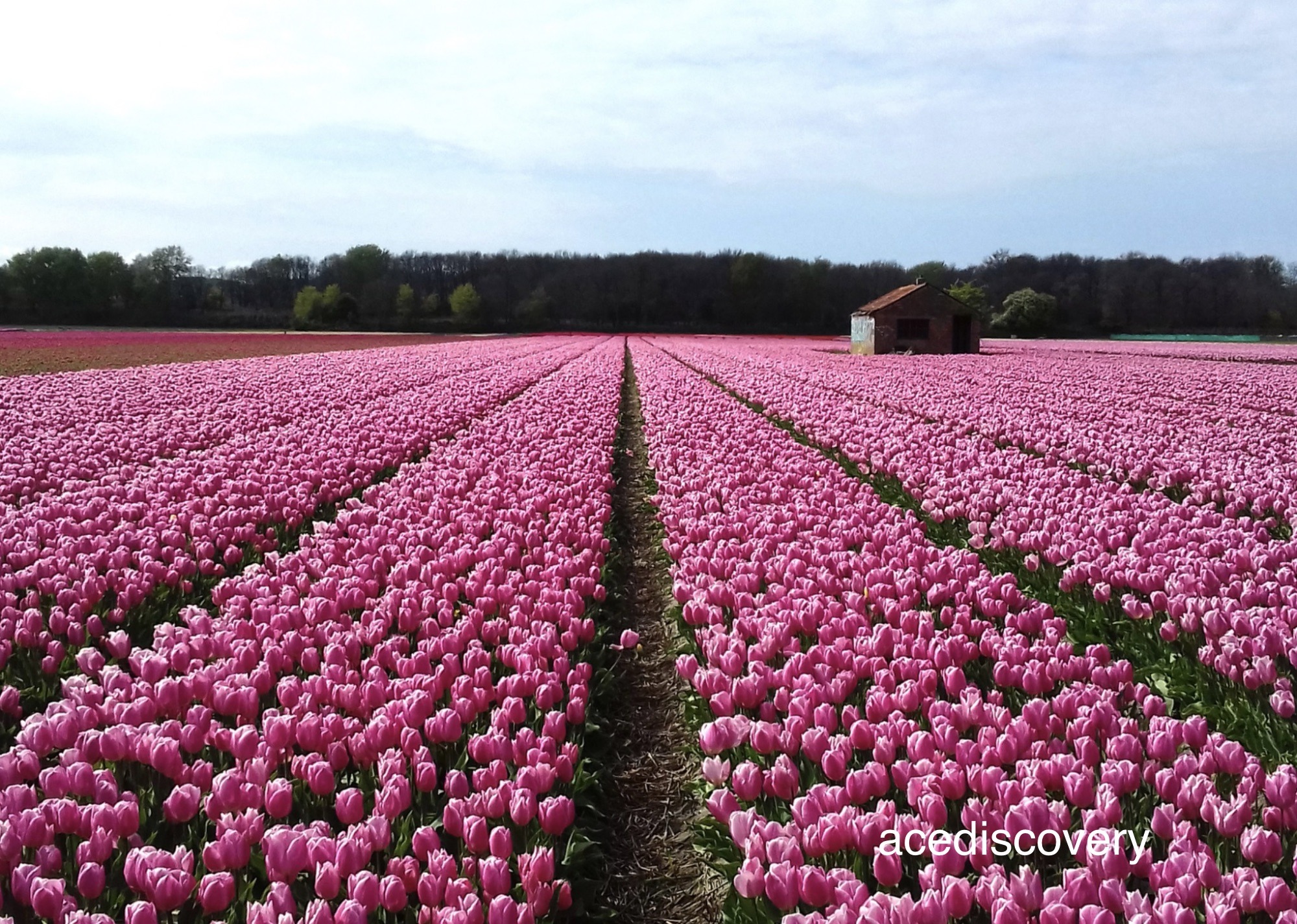
Tulips fields in Bollenstreek area of the Netherlands
Why “Oddly enough?” Because tulips are native to the rugged growing conditions of eastern Europe and western Asia. There, summers are hot and dry, and winters are wet and cold. Soils are relatively infertile.
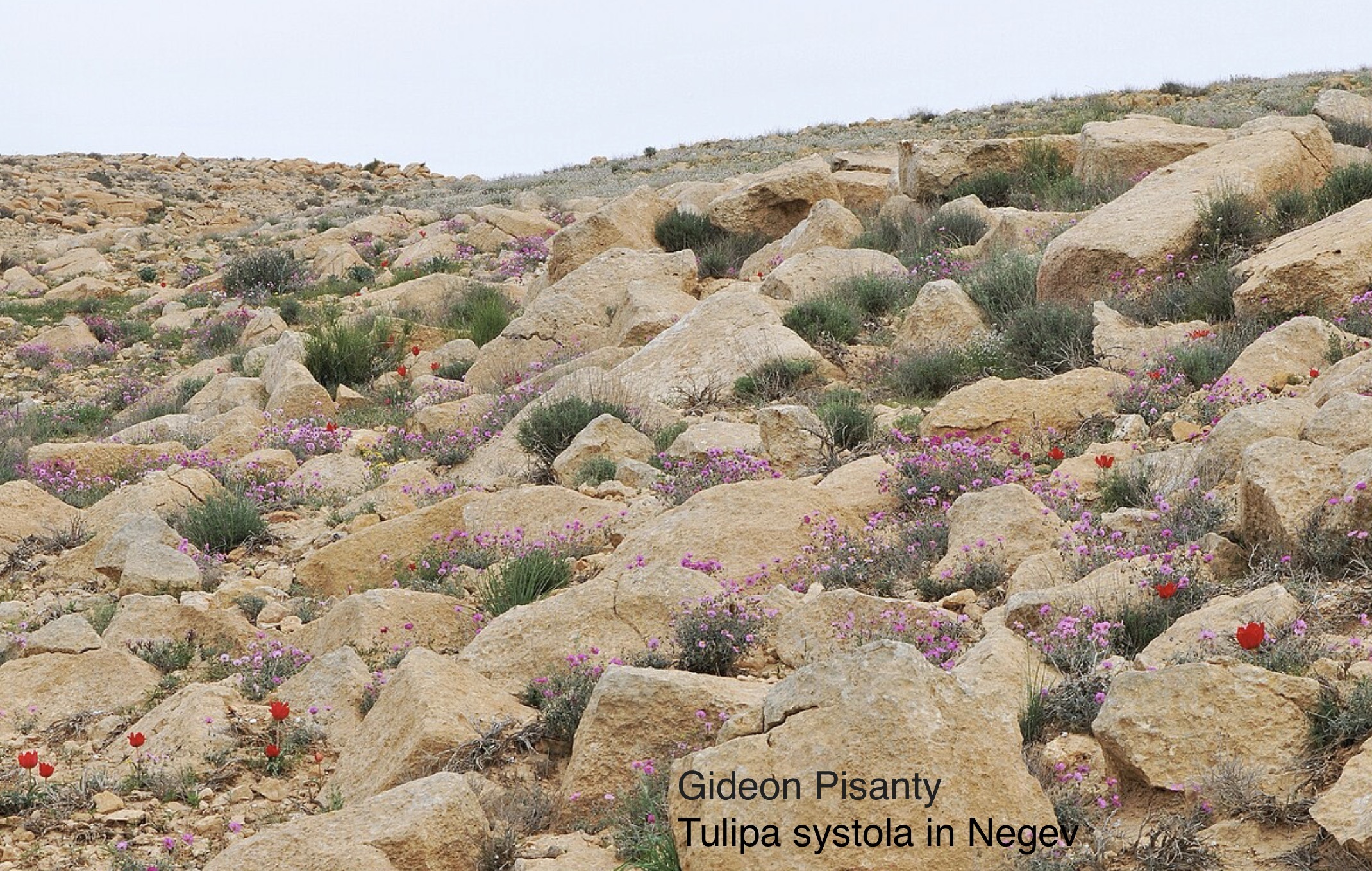
Tulipa systola in Negev
Also at work is the human hand. Since there introduction into western Europe in the 16th century, the plants have been bred for all sorts of showy colors and shapes of blossoms. These hybrid, hi-bred plants can be prissy.
Cultivating Tulips
So don’t emulate tulips’ native habitat in your flower garden. The optimum site for tulips is well-drained soil bathed daily in 5 to 6 hours of sunlight throughout spring. Some summer shade helps even though tulips’ leaves have by then melted away, by keeping the slumbering bulbs from getting warmer than about 70 degrees. (Keep this maximum temperature in mind as you store tulip bulbs before planting!)
Where drainage is less than perfect, either choose a new site, add abundant compost, leaves, or other organic materials to the soil, or create raised beds.
So much for choosing the site: Good growing conditions is an annual affair for a more perennial tulip. Lusty growth in spring is critical, because that’s when the plant is piecing together the following year’s blossoms.
The leaves have about 6 weeks to pump as much food as possible into making new, flowering bulbs. A mulch of compost or a sprinkling of soybean meal applied in early fall provides long-lasting, organic sustenance to feed the growing roots in fall and the growing leaves in spring.
Snapping off spent flowers aborts seed production, so more energy can go to the fledgling bulbs.
Now for the hard part: After they flower, don’t cut off the admittedly ugly leaves before they brown or snap off easily when given a slight tug. In show gardens, public or private, bulbs are lifted after flowering with a good root ball for replanting out of site. Or just tossed in the compost, with new bulbs bought the following year.
Which Tulips are (Almost) Forever
Even with good care, most tulip bulbs and — sad to say — blossoms will still peter out after a few years. Over the centuries, fancy tulip hybrids have been bred for spectacular blossoms, not for staying power.
Yet there are a few varieties and kinds of tulips that not only will blossom year after year, but whose blossoms will multiply as new bulbs are produced.
If large cup-shaped tulip blossoms are your fancy, Darwin hybrid tulips are the ones to grow for perennial bloom. These robust plants, blooming midseason (for tulips, that is), are hybrids of near-wild fosteriana tulips and what are known as “cottage” or “single late” tulips. Among the best choices here are Beauty of Appeldorn, Golden Appeldorn, Golden Parade, Gudoshnik, Jewel of Spring, and Orange Sun.
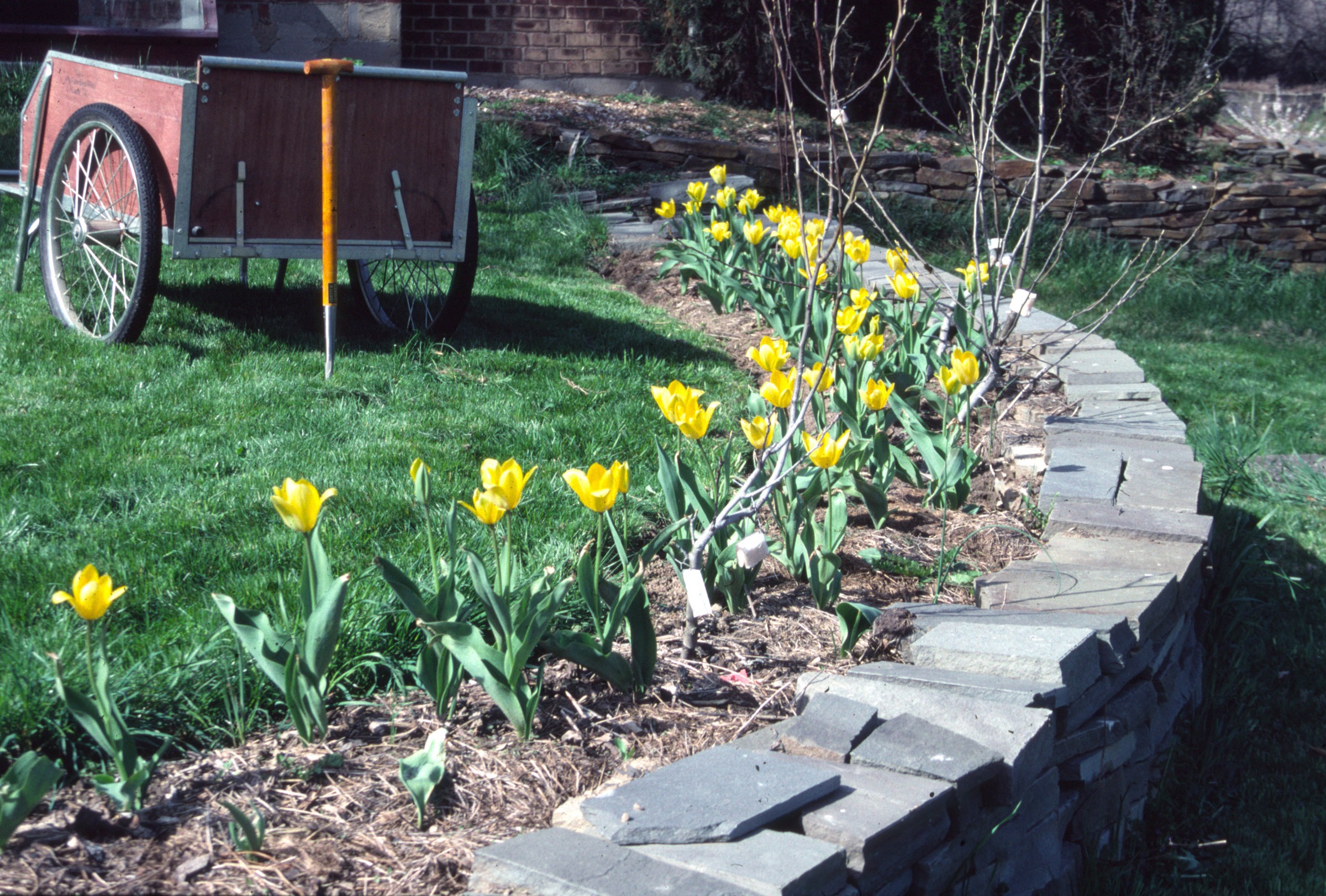
Tulipa fosteriana, Yellow Emperor
Still, there’s more chance of success with rich, well-drained soil, full sun, and if bulbs are left undisturbed until the foliage browns and melts back into the ground.
A few other kinds of large flowered tulips also allegedly perennialize. Among single late tulips, Dillenberg will do this. And among triumph tulips, the largest group, we find Arabian Mystery, Don Quichotte, Dreaming Maid, and High Society with this habit.
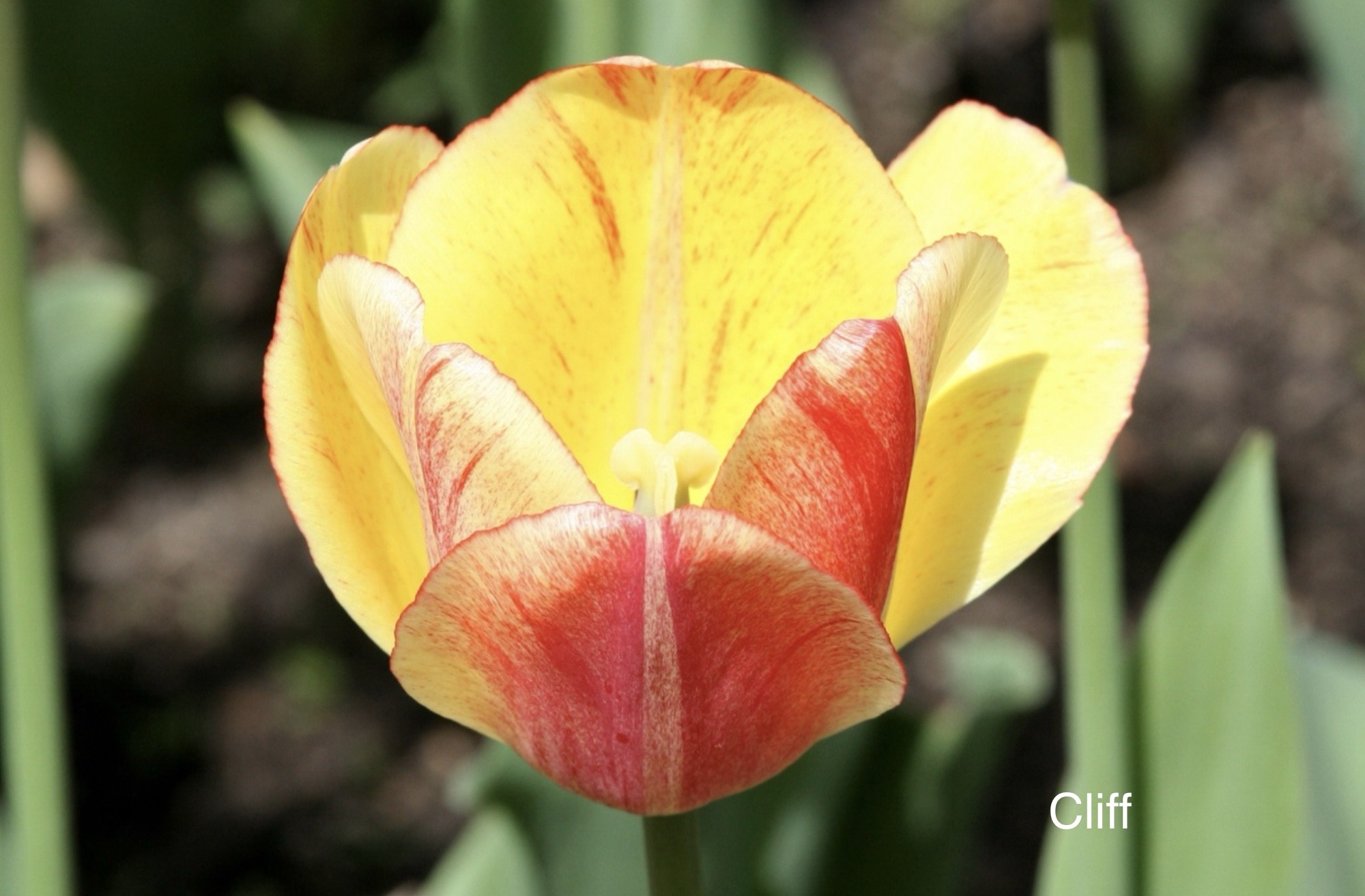
Darwin Hybrid Tulip ‘Gudoshnik’
The Forever-est
But let’s turn to near-wild and wild tulips as the ones that most generally blossom and multiply year after year. I can attest to this after decades of growing them. Their flowers may be smaller and on shorter stems, yet these early blooming gems, often borne in clusters, have a delicacy those fancy hybrids lack.
And the blossoms are not always smaller; fosteriana tulips, for example, have huge blossoms. Good choices among fosterianas include Juan, as well as those with “Emperor” in their names.
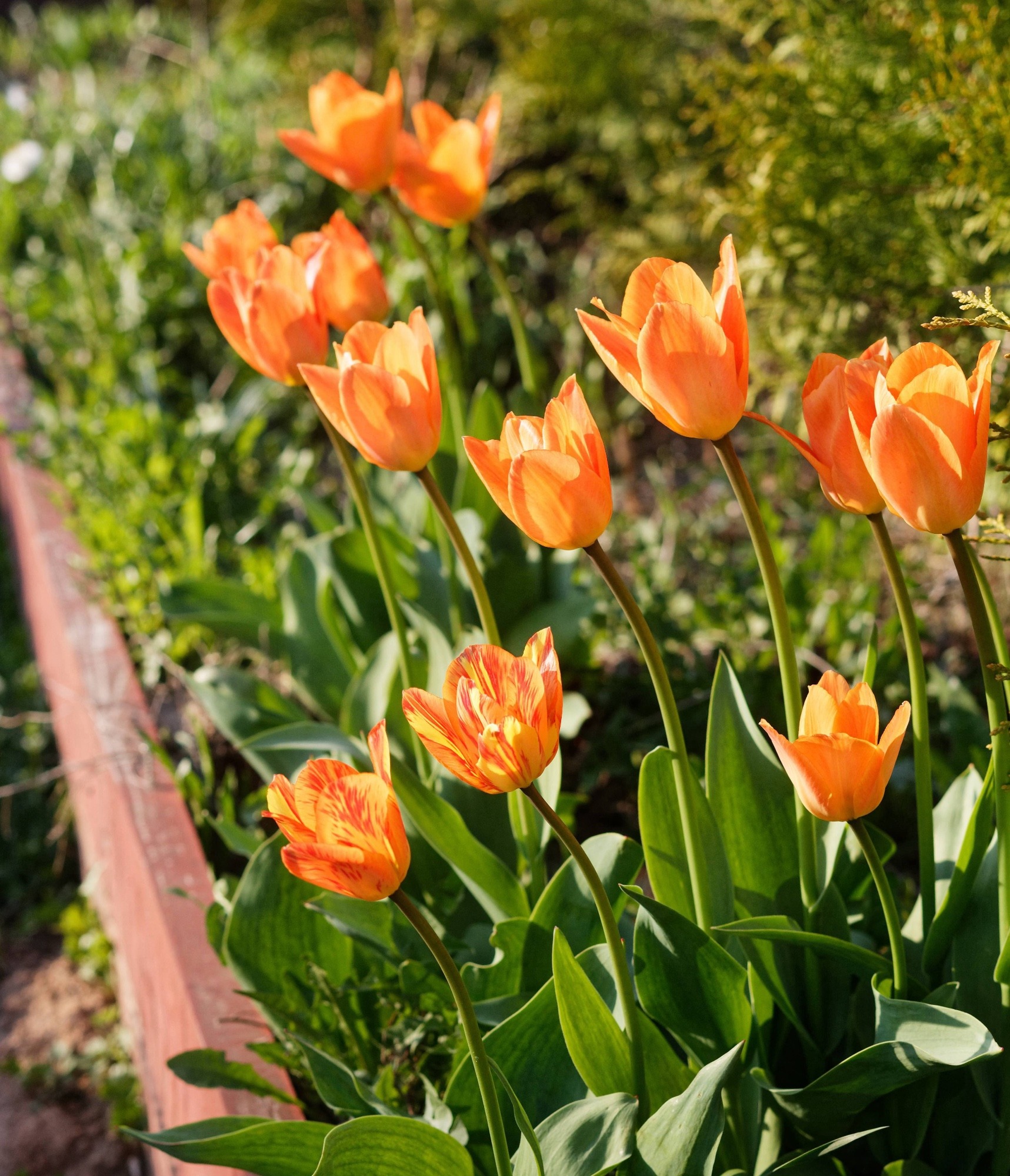
Tulipa fosteriana Orange Breeze
Kaufmaniana tulips, another near-wild type, are sometimes called waterlily tulips for the way their low blossoms open wide, almost flat.
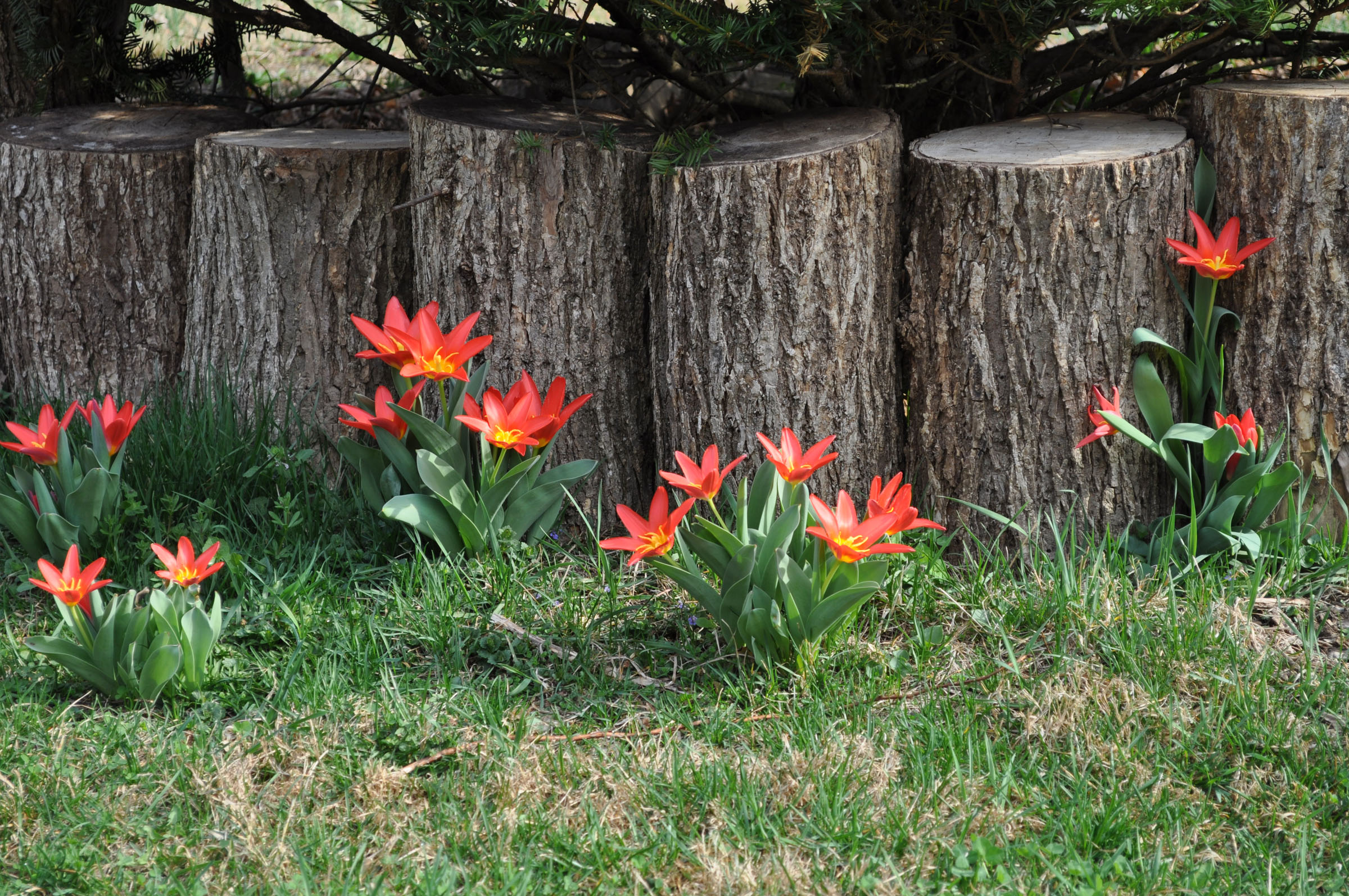
Tulipa kaufmanniana, Waterlily tulip
Gregeii tulips, yet another near-wild type, have, in addition to dainty blossoms in striking colors, leaves that are decoratively striped with maroon.
And finally, there are many wild species, listed often only under their botanical names, that sport even daintier blossoms that multiply the show year after year.
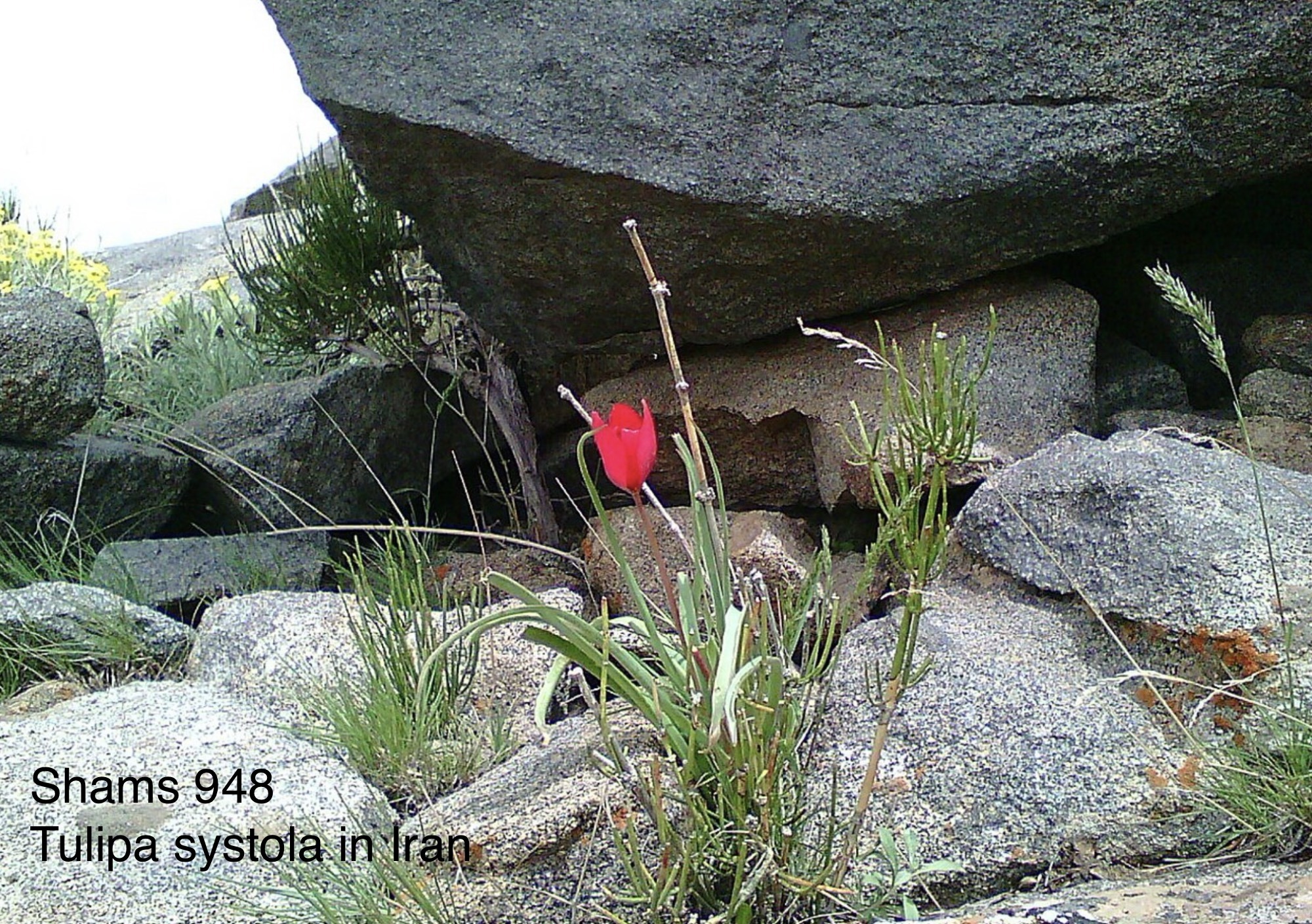
Tulipa systola in Iran
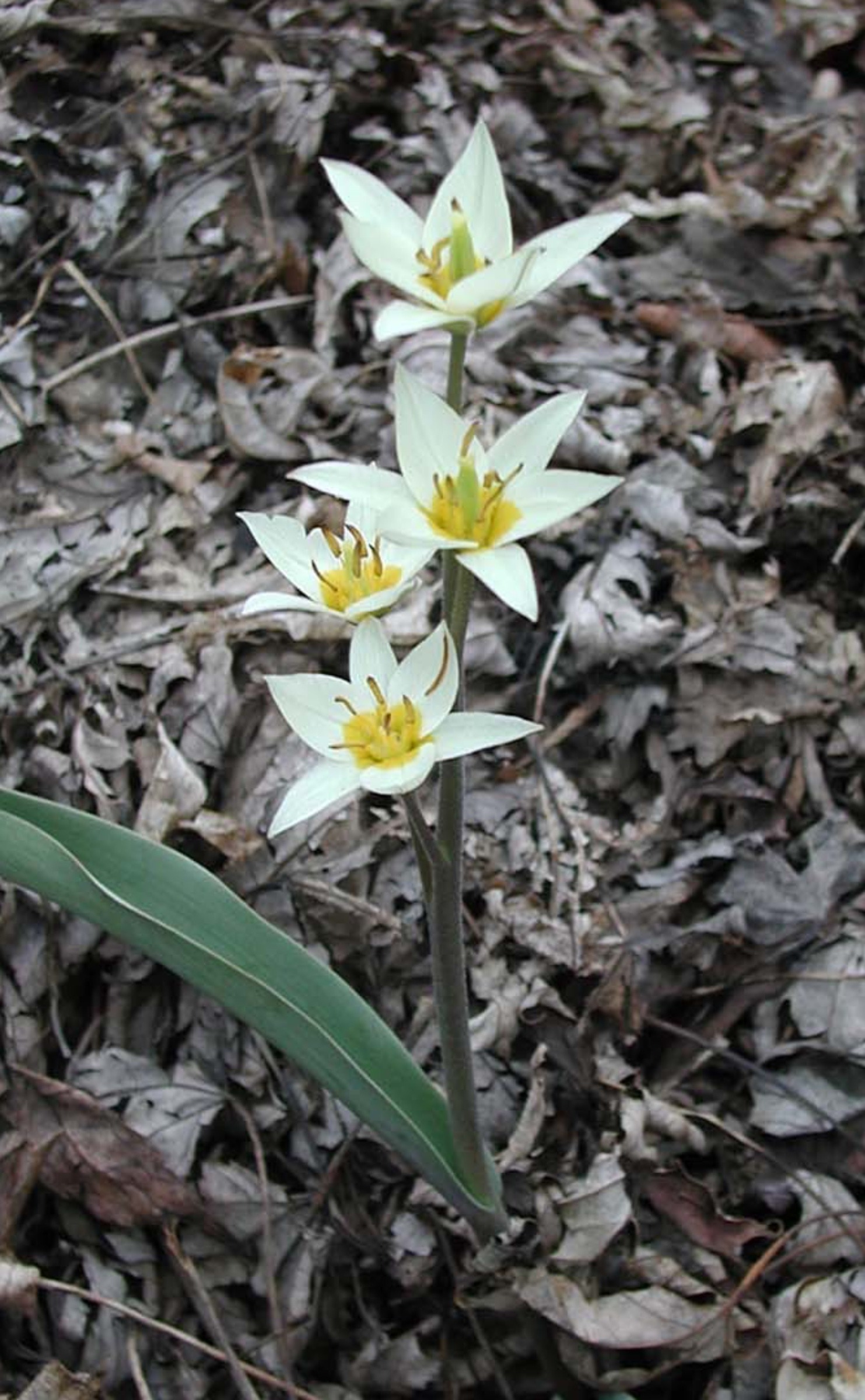
Tulipa turkestanica
Now go plant. If you’re impatient for the quickest, best show from any of these tulips, buy the biggest bulbs available. Plant deep so the bulbs will keep cool even in summer and be able to mingle with other perennial flowers.
And make sure always to plant the bulbs with their noses up.


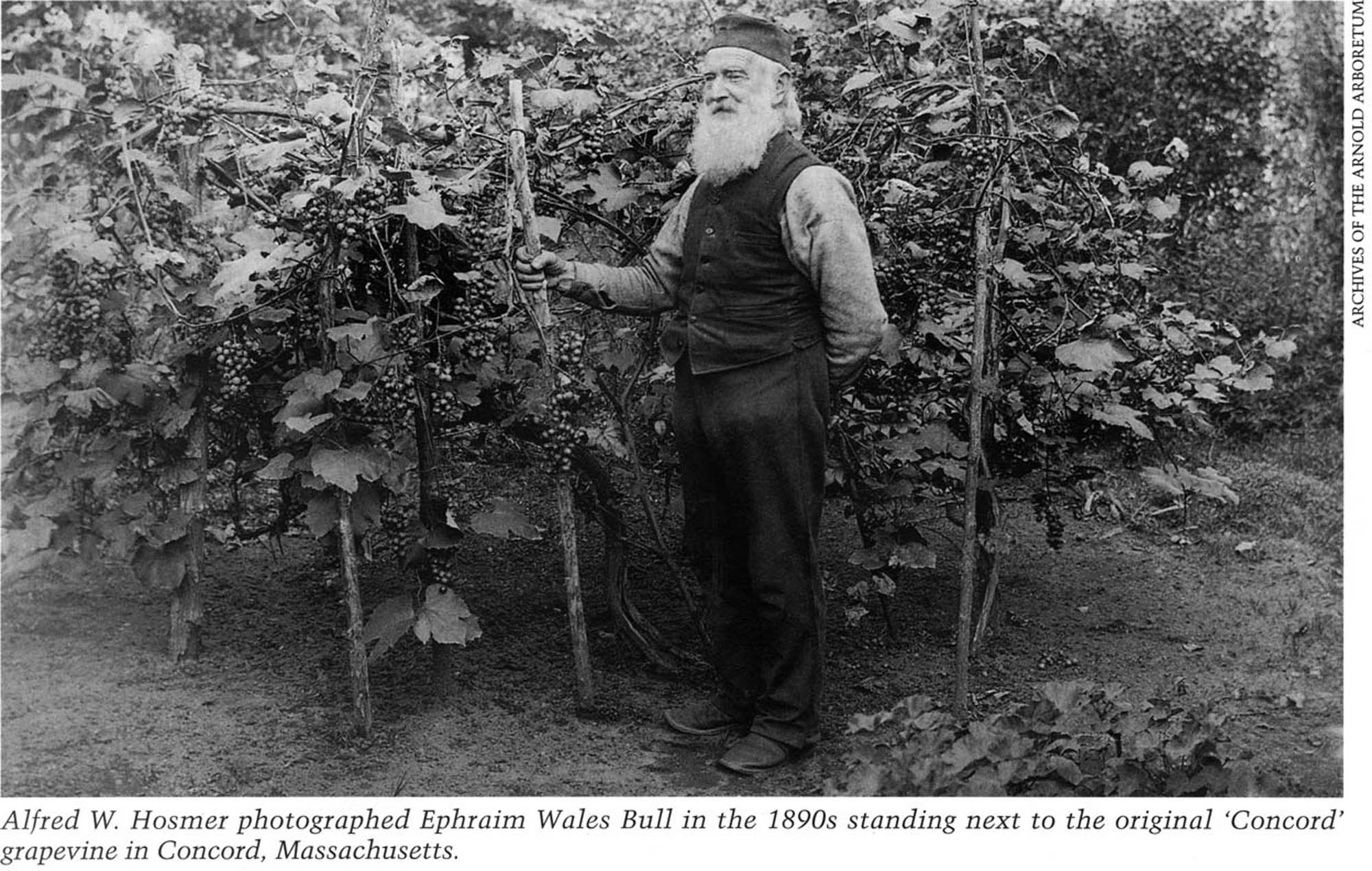
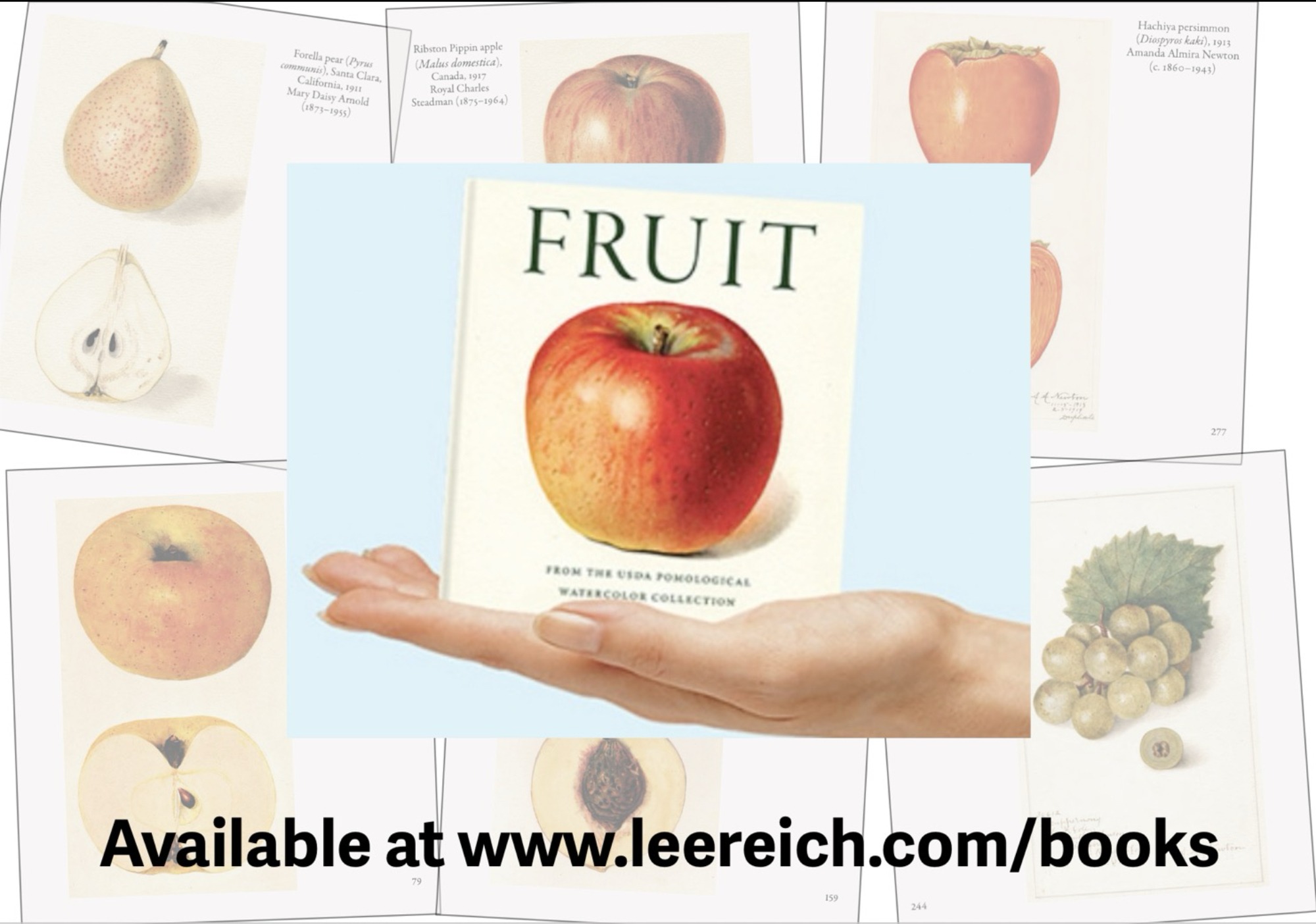
I love tulips, but unfortunately so do the voles and deer. However, they seem to leave some varieties of the smaller species tulips alone, so I plant them with narcissus, Scilla, galanthus and miniature iris. Maybe someone will come up with a beautiful bad tasting tulip someday.
You could try sprinkling them with blood or bone mea, or spraying with Bobbex (very effective in my experience, and spray needed only once a month).